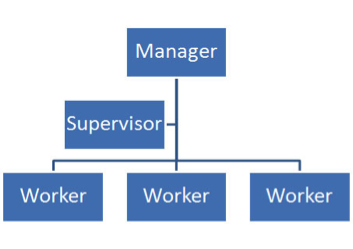I live in Omaha, NE where it seems we are always about a year behind any national trends. When some new wave hits us here in the Midwest, it?s old news to my friends in California.
Sometimes, I feel like the church functions like us Midwesterners ? like trend-followers. More and more, it seems like the church is taking her cues from business and organizing hierarchically like the business world.
There are three obvious problems with this:
- The church is not a business.
- The church is following business?trends.
- The church should be setting the trends that influence?business, not the other way around.
It should be self-apparent that the church is not a business, however, sadly, there are many folks who see the church primarily?as a business. This is because the church has organized and conducted itself much?like a business instead of being an influence in business and in the world.
So over my next three blog posts, I?d like to talk about current organizational leadership structure trends. We will start with Vertical Leadership today, then proceed to Horizontal Leadership, and finally conclude the series with what we at the Leadership Institute refer to as Overflow Leadership, a model we believe is well-suited for all organizations, not just churches or ministries.
For my entire working life, Vertical Leadership has been the dominant way business has structured itself. This way of organization is the classic, top-down, organization chart with which we are all familiar.
Perhaps a more helpful way to visualize this type of leadership structure is seeing the leader as discerning the ?vision? and the workers doing the heavy lifting to realize the goal of the vision.

Some hallmarks of Vertical Leadership might be:
- It is personality-based.
- It creates division between those who lead and those who follow.
- It tends to elevate ?leaders? into an elite class.
- It tends to create distinctions between those who lead and those who manage.
- It creates ?silos? where leaders protect their turf.
- When a leader is removed from the structure, the structure is severely threatened.
So, what?s attractive about Vertical Leadership and why has this been our model for such a long time? Well, I can think of two primary reasons:
- It?s seductive in general. It promises that things will get done quicker. There will be movement.
- It?s seductive to the leader. Things will get done because of me. I will be seen.
Today, we are seeing a movement into Horizontal Leadership because Vertical Leadership worked! We see that we truly have gotten many things done; but, we are beginning to recognize we haven?t done the right things. We?ve siloed ourselves into unethical organizational catastrophes: Worldcom, Enron, banking scandals, mega-church failures, and on and on.
We are also seeing a movement to Horizontal Leadership because we truly have had effective, powerful leaders who have led us into their vision of reality; and, we?ve found that vision wanting. We?ve been drawn in by their charisma and left our own voices in our center desk drawers like the whiteout that we never use anymore.
But, is Horizontal Leadership the answer?
Will things still get done? Who will lead? Is there a need for leaders at all?
In Part 2, I will attempt to answer these questions and more. Stay tuned!

